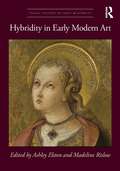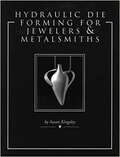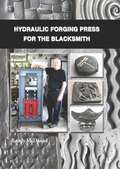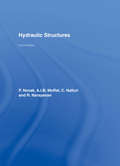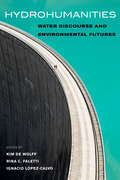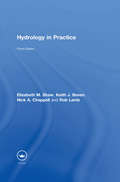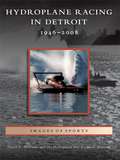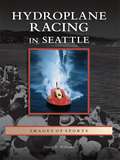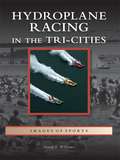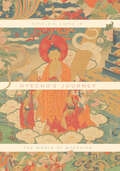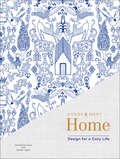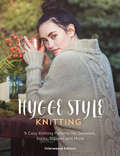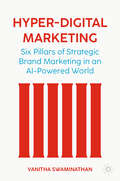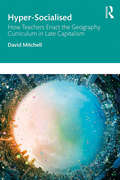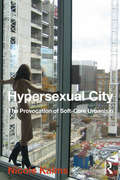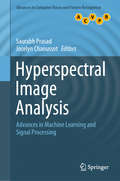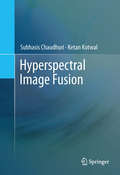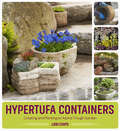- Table View
- List View
Hybridity in Early Modern Art (ISSN)
by Ashley Elston Madeline RislowThis collection of essays explores hybridity in early modern art through two primary lenses: hybrid media and hybrid time. The varied approaches in the volume to theories of hybridity reflect the increased presence in art historical scholarship of interdisciplinary frameworks that extend art historical inquiry beyond the single time or material. The essays engage with what happens when an object is considered beyond the point of origin or as a legend of information, the implications of the juxtaposition of disparate media, how the meaning of an object alters over time, and what the conspicuous use of out-of-date styles means for the patron, artist, and/or viewer. Essays examine both canonical and lesser-known works produced by European artists in Italy, northern Europe, and colonial Peru, ca. 1400–1600. The book will be of interest to art historians, visual culture historians, and early modern historians.
Hybridity in Early Modern Art (Visual Culture in Early Modernity)
by Ashley Elston Madeline RislowThis collection of essays explores hybridity in early modern art through two primary lenses: hybrid media and hybrid time. The varied approaches in the volume to theories of hybridity reflect the increased presence in art historical scholarship of interdisciplinary frameworks that extend art historical inquiry beyond the single time or material. The essays engage with what happens when an object is considered beyond the point of origin or as a legend of information, the implications of the juxtaposition of disparate media, how the meaning of an object alters over time, and what the conspicuous use of out-of-date styles means for the patron, artist, and/or viewer. Essays examine both canonical and lesser-known works produced by European artists in Italy, northern Europe, and colonial Peru, ca. 1400–1600. The book will be of interest to art historians, visual culture historians, and early modern historians.
Hyde Park
by Leslie HudsonFirst founded in 1853 by New York lawyer Paul Cornell, who named the community after the famous London park, Hyde Park was incorporated in 1861 and in 1889 the village was annexed to the City of Chicago. At the time of annexation, Hyde Park was extremely large in size, extending from 39th to 138th Streets. Today the area stretches from Lake Michigan to Cottage Grove Avenue and 47th to 59th Streets.The 1890s was a time of great growth for Hyde Park. The construction of the 1893 World's Columbian Exposition in Jackson Park had a profound and lasting effect not only on Hyde Park and the city, but on the entire country. The famous University of Chicago was founded in 1890 and was under construction simultaneously with the World's Columbian Exposition. The area grew, attracting additional businesses, people, and an expanding economy to the area.
Hyde Park (Images of America)
by Monica Heath James HeathNestled in the quiet hills of Vermont's Green Mountains lies the shire town of Hyde Park. Located in the heart of Lamoille County, its vibrant history reflects the essence of small-town culture, community, and pride. Chartered in 1781 and first settled by John McDaniel in 1787, the town was named after Capt. Jedidiah Hyde, who settled in town with his family from Norwich, Connecticut. One of Vermont's former governors, Carroll S. Page, was an integral part in the town's development in the late 1800s as he was successful in establishing the world's "largest calfskin factory." Surviving the flood of 1927 and the hurricane of 1938, the town in the 1900s experienced growth in business and prosperity. Through vintage photographs of tree-lined streets, mountain views, dairy farms, mills, churches, schools, and the people who bring the very essence of this community to life, Hyde Park celebrates the spirit of this historic town.
Hydraulic Canals: Design, Construction, Regulation and Maintenance
by Jose Liria MontanesAimed at engineers with a good grounding in hydraulic engineering, this practical reference fills a need for a guide to the design, construction, management and modernisation of canals. It provides an in-depth study of the problems caused by seepage, an analysis of the various possible linings, the constraints posed by canals constructed witho
Hydraulic Die Forming for Jewelers and Metalsmiths
by Susan KingsleyHydraulic Die Forming for Jewelers and Metalsmiths was first published in 1993. Many things have changed since then in the world of die forming. The process has become very popular and is no longer considered a threat to traditional metalsmithing methods involving hammers. There are multiple press designs available for purchase and new sources for materials and equipment. A few accessory tools are no longer available, but there are hundreds of new ones that add more versatility to the press. (It's not within the scope of this book to review all the new tools.) <p><p> Lists of jewelry and metalsmithing books, craft organizations, local guilds and other resources have all been updated. In the 2016 Edition, the content and basic design of the book remains the same, offering practical advice on hydraulic equipment, basic information about the materials and processes, and step-by-step directions for making and using dies. The 5th Edition has larger photos, updated illustrations and an enlarged gallery section of work by successful artists.
Hydraulic Forging Press for the Blacksmith
by Randy McDanielThe hydraulic forging press is becoming increasingly important to the any blacksmith shop. This relatively small machine, which is often hand made, allows smiths to do many of the same operations as a power hammer while adding more control and expanding what one can do with hot metal. Over forty years ago a spark ignited Randy McDaniel's passion for forging hot metal. This has been a passion that continually grows. Seven years ago his exploration of hot metal evolved and he began specializing in work done with the hydraulic forging press. Randy now creates all of his own tooling and dies which he uses to produce a line of unique items. He loves how the power of his sixty ton press pushes hot metal as if it were clay in his hands. This book covers the history, the how to, and especially the versatility of the hydraulic forging press for the blacksmith and the knife maker. It provides a comparison between the press and other machinery, the different types of presses, which type of press is right for your application, should you build one or buy one, focuses on tooling that you can make to get the most out of your press and much, much more. Large, full-color drawings and photographs of presses, items made on the press, and the tooling used are featured through out the book and in the gallery section. Award-winning author and blacksmith, Randy McDaniel has brought together an international group of collaborators to make Hydraulic Forging Press for the Blacksmith a useful and inspirational resource for anyone forging hot metal.
Hydraulic Structures
by C. Nalluri P. Novak A.I.B. Moffat R. NarayananNow includes Worked Examples for lectutrers in a companion pdf! The fourth edition of this volume presents design principles and practical guidance for key hydraulic structures. Fully revised and updated, this new edition contains enhanced texts and sections on: environmental issues and the World Commission on Dams partially saturated soils, small amenity dams, tailing dams, upstream dam face protection and the rehabilitation of embankment dams RCC dams and the upgrading of masonry and concrete dams flow over stepped spillways and scour in plunge pools cavitation, aeration and vibration of gates risk analysis and contingency planning in dam safety small hydroelectric power development and tidal and wave power wave statistics, pipeline stability, wave–structure interaction and coastal modelling computational models in hydraulic engineering. The book's key topics are explored in two parts - dam engineering and other hydraulic structures – and the text concludes with a chapter on models in hydraulic engineering. Worked numerical examples supplement the main text and extensive lists of references conclude each chapter. Hydraulic Structures provides advanced students with a solid foundation in the subject and is a useful reference source for researchers, designers and other professionals.
Hydrohumanities: Water Discourse and Environmental Futures
by Kim De Wolff, Rina C. Faletti and Ignacio López-CalvoA free open access ebook is available upon publication. Learn more at www.luminosoa.org. Discourse about water and power in the modern era have largely focused on human power over water: who gets to own and control a limited resource that has incredible economic potential. As a result, discussion of water, even in the humanities, has traditionally focused on fresh water for human use. Today, climate extremes from drought to flooding are forcing humanities scholars to reimagine water discourse. This volume exemplifies how interdisciplinary cultural approaches can transform water conversations. The manuscript is organized into three emergent themes in water studies: agency of water, fluid identities, and cultural currencies. The first section deals with the properties of water and the ways in which water challenges human plans for control. The second section explores how water (or lack of it) shapes human collective and individual identities. The third engages notions of value and circulation to think about how water has been managed and employed for local, national, and international gains. Contributions come from preeminent as well as emerging voices across humanities fields including history, art history, philosophy, and science and technology studies. Part of a bigger goal for shaping the environmental humanities, the book broadens the concept of water to include not just water in oceans and rivers but also in pipes, ice floes, marshes, bottles, dams, and more. Each piece shows how humanities scholarship has world-changing potential to achieve more just water futures.
Hydrology in Practice
by Elizabeth M. Shaw Keith J. Beven Nick A. Chappell Rob LambHydrology in Practice is an excellent and very successful introductory text for engineering hydrology students who go on to be practitioners in consultancies, the Environment Agency, and elsewhere. This fourth edition of Hydrology in Practice, while retaining all that is excellent about its predecessor, by Elizabeth M. Shaw, replaces the material on the Flood Studies Report with an equivalent section on the methods of the Flood Estimation Handbook and its revisions. Other completely revised sections on instrumentation and modelling reflect the many changes that have occurred over recent years. The updated text has taken advantage of the extensive practical experience of the staff of JBA Consulting who use the methods described on a day-to-day basis. Topical case studies further enhance the text and the way in which students at undergraduate and MSc level can relate to it. The fourth edition will also have a wider appeal outside the UK by including new material on hydrological processes, which also relate to courses in geography and environmental science departments. In this respect the book draws on the expertise of Keith J. Beven and Nick A. Chappell, who have extensive experience of field hydrological studies in a variety of different environments, and have taught undergraduate hydrology courses for many years. Second- and final-year undergraduate (and MSc) students of hydrology in engineering, environmental science, and geography departments across the globe, as well as professionals in environmental protection agencies and consultancies, will find this book invaluable. It is likely to be the course text for every undergraduate/MSc hydrology course in the UK and in many cases overseas too.
Hydroplane Racing in Detroit: 1946 - 2008 (Images of Sports)
by David D. Williams Hydroplane and Raceboat MuseumSince the start of the 20th century, Detroit has been the hub of the motorized world. It was only natural that the powerful motors built in Detroit's huge factories eventually found their way into high-speed boats and that organized racing soon followed. Starting in 1916, Detroit became the center of powerboat racing. Names like Gar Wood, Chris Smith, and Horace Dodge dominated the sports pages of the 1920s and 1930s. Following World War II, racing in Detroit entered its golden era. Led by local businessmen like Jack Schafer, Joe Schoenith, and George Simon, hydroplane racing captured the heart of the community in a way that has never been equaled.
Hydroplane Racing in Seattle (Images of Sports)
by David D. WilliamsHydroplane racing burst onto the Seattle scene in 1950, and local sports fans embraced it with a passion that is hard to imagine. Throughout the early 1950s, thousands of fans flocked to Lake Washington to watch classic races between Seattle's Slo-mo-shun boats and a fleet of East Coast challengers. For over 40 years, hydroplane racing was synonymous with summertime in Seattle. During its golden age, when "hydro fever" was at its height, drivers like Bill Muncey, Ron Musson, and Mira Slovak were sports heroes on par with today's Ken Griffey Jr. or Ichiro. Seattle became the "hydro" capital of the nation.
Hydroplane Racing in the Tri-Cities (Images of Sports)
by David D. WilliamsPasco, Kennewick, and Richland sit along the banks of the Columbia River and form a large, vibrant community in Washington known as "the Tri-Cities." For over 40 years, tens of thousands of fans have come to the Columbia River to enjoy a day in the sun and watch the Columbia Cup Unlimited Hydroplane Race. Famous drivers like Bill Muncey, Dean Chenoweth, Chip Hanauer, and Dave Villwock have all come to Tri-Cities and battled deck-to-deck to win the Columbia Cup.
Hyecho's Journey: The World of Buddhism
by Donald S. Lopez Jr.In the year 721, a young Buddhist monk named Hyecho set out from the kingdom of Silla, on the Korean peninsula, on what would become one of the most extraordinary journeys in history. Sailing first to China, Hyecho continued to what is today Vietnam, Indonesia, Myanmar, India, Pakistan, Afghanistan, and Iran, before taking the Silk Road and heading back east, where he ended his days on the sacred mountain of Wutaishan in China. With Hyecho’s Journey, eminent scholar of Buddhism Donald S. Lopez Jr. re-creates Hyecho’s trek. Using the surviving fragments of Hyecho’s travel memoir, along with numerous other textual and visual sources, Lopez imagines the thriving Buddhist world the monk explored. Along the way, Lopez introduces key elements of Buddhism, including its basic doctrines, monastic institutions, works of art, and the many stories that have inspired Buddhist pilgrimage. Through the eyes of one remarkable Korean monk, we discover a vibrant tradition flourishing across a vast stretch of Asia. Hyecho’s Journey is simultaneously a rediscovery of a forgotten pilgrim, an accessible primer on Buddhist history and doctrine, and a gripping, beautifully illustrated account of travel in a world long lost.
Hygge & West Home: Design for a Cozy Life
by Aimee Lagos Christiana CoopFrom the cofounders of the popular design company. “Inside the must-read, the duo takes us inside 20 homes that embody the hygge way of life.” —Architectural DigestTastemakers Christiana and Aimee of Hygge & West know that the key to making a house into a home is in the decoration—whether that means embracing natural elements, creating cozy spaces, making room for family, or finding your own personal charm in every space. Hygge & West Home offers a look into twenty covetable homes designed to promote feelings of coziness, companionship, and comfort, from an intimate apartment in San Francisco to a log cabin in Wyoming, a family home in Minneapolis, and a colorful oasis in Brooklyn. With page after page of aspirational interiors, engaging interviews with home owners, and tips on creating similar feelings in any space, this eye-catching book explores what makes a house a truly personal space and offers readers the tools and inspiration to make their home their own.“Christiana Coop and Aimee Lagos, creators of Hygge & West designs, know how to make the home a retreat, a soft and charming space that really embraces hygge, the Danish design term for a cozy, sweet environment.” —Unique Homes“A must-have resource if you are interested in design and interiors.” —Coral & Tusk
Hygge Knits: 9 cosy hygge style knitting patterns for sweaters, socks, slippers and more
by Interweave EditorsCapture the spirit of 'hygge' – the Danish art of finding pleasure in simple things – with this collection of cozy knitted projects. Featuring a range of small and large projects for garments and snuggly home accessories this is the perfect hygge knitting pattern collection to keep the winter cold at bay.
Hygrothermal Behaviour and Building Pathologies (Building Pathology and Rehabilitation #14)
by J. M. P. Q. DelgadoThis book presents recent research in the area of construction pathology, hygrothermal behaviour of buildings, service life and diagnostic techniques, and highlights the latest developments in building physics, hygrothermal behaviour, durability and numerical models applied to building materials analysis. Discussing the state of the art in the field, and covering topics relevant to variety of engineering disciplines, such as civil, materials and mechanical engineering, it will appeal to scientists, students, practitioners, lecturers and other stakeholders.
Hyper Realistic Drawing: Create Photorealistic 3D Art with Coloured Pencils
by Amie HowardLearn how to create realistic 3D art with this collection of step-by-step techniques and tutorials for creating hyperrealistic art using coloured pencils. The trend for hyper realistic artworks featuring high shine subjects is inspiring a new generation of artists. Take your art to the next level with this collection of step-by-step techniques and tutorials for creating hyper realistic artwork. Artist and author, Amie Howard, is an expert in how to get the most from coloured pencils and she takes you through all the key techniques for rendering realistic representations of everything from pets to water. The first part of the book explores basic drawing techniques including blending, shading, glazing and scumbling - a technique used to create a slick surface texture. There are simple practise exercises for each of the techniques sections so that you can experiment and get comfortable with the different methods before trying them out on a final artwork. This section includes advice about how to get the perfect blend of colours and textures as well as tips about adding in the fine details that make all the difference. The step-by-step tutorials feature a wide range of subjects including animals, portraits, food and drink so you will learn how to recreate a large number of different surfaces and textures. The chapters are broken up into sections: Surfaces; Animals; Birds, People and Other Textures which looks at a range of different natural and synthetic textures including tree bark, grass, a soft drink can and a shiny sweet wrapper. All of the tutorials have multiple step-by-step images so you can see how the forms and textures are built up over a series of stages. Amie shares her tips and tricks for creating incredibly realistic representations of textures including feathers and fur and there are up close studies for a cat's eye, a dog's nose and a single feather so you can the details involved in these projects. Other up close studies include lips and a nose and a bird's beak and eye. The instructions will allow you tackle challenging subjects such as ripples on water and ice in glass by breaking down the drawing process into clear step-by-step instructions and photographs, allowing you to follow the artist at each step.
Hyper-Digital Marketing: Six Pillars of Strategic Brand Marketing in an AI-Powered World
by Vanitha SwaminathanThe rapid changes in technology and the rise of AI have heralded the introduction of a new era, which we refer to as the era of hyper-digitalization. This shift has significant impacts on how organizations and enterprises carry out critical functions across various areas, including marketing, information technology, human resources, and others. We are witnessing the transformation of the marketing function, with many traditional roles of marketers being replaced by new roles that depend heavily on cross-functional coordination with multiple areas. These changes could be far-reaching and have already dramatically impacted how to organize many tasks within organizations. Against this backdrop, this book offers modern marketers and technologists a guide on navigating the many changes occurring in organizations. Any senior executive can leverage many of the concepts presented in this book and be able to handle the sweeping changes taking place in the age of AI. This book introduces a new framework with six pillars of modern marketing strategy in the age of hyper-digitalization – purpose, phygital experiences, platform, participation, personalization, and partnerships. Each pillar has its own chapter, which provides specific guidance for managers on how to implement it. The chapters also demonstrate how each pillar can influence key outcomes like attention and engagement. In the context of hyper-digitalization and AI, the six-pillar framework will help managers navigate current developments and implement changes that any enterprise is faced with. It will offer senior marketing strategists and students a framework for strategic thinking that prepares them for the workplace of tomorrow. The framework is supported by numerous case studies and examples (from both the United States and other parts of the world) that demonstrate how these concepts are applied in real-world situations. The book incorporates insights from scholarly research on these topics to provide evidence-based guidance for managers and executives.
Hyper-Socialised: How Teachers Enact the Geography Curriculum in Late Capitalism
by David MitchellHyper-socialised explores the challenges of late capitalist times for education systems, schools and teachers. It looks at how trends of accountability, ‘teaching to the test’, using pupil voice and reliance on network technologies are all connected to powerful social and economic forces, shaping the curriculum as it is taught in classrooms. Such forces threaten to overwhelm teachers but, in the right hands, they can also be harnessed to create, influence and teach a truly powerful curriculum for their students. Presenting a historical view of curriculum change, the book examines how society, curriculum and teachers are linked. Using geography as an illustrative subject, the chapters investigate what influences teachers, to what extent they are in control of the curriculum, and what else is shaping it. Divided into two parts, it offers An in-depth exploration of the relationship between society, teachers and the curriculum, including that what and how to teach remain wide open to debate Evidence-based research into the significance and implications of ‘hyper-socialised’ curriculum enactment for teachers and teacher education Four case study ‘portraits’ of geography departments and personal curriculum stories of each Head of Department Insights into the nature of teaching as a profession and how a crisis of teacher recruitment and retention may be addressed. Written in clear and accessible terms, this book is an essential resource for teacher educators, subject teachers, headteachers and educational researchers who want to understand how and why schools and teaching are changing – and what this means for them.
Hypersexual City: The Provocation of Soft-Core Urbanism
by Nicole KalmsMuch of feminist architectural scholarship focuses on the enormous task of instating women’s experience of space into spatial praxis. Hypersexual City: The Provocation of Soft-Core Urbanism suggests this attention to women’s invisibility in sociocultural space has overlooked the complex ways in which women already occupy space, albeit mostly as an image or object to be consumed, even purchased. It examines the occupation of urban space through the mediated representation of women’s hypersexualized bodies. A complex transaction proliferates in the commercial urban space of cities; this book seeks to address the cause and consequence of the increasing dominance of gendered representation. It uses architectural case studies and analysis to make visible the sexual politics of architecture and urbanism and, in doing so, reveal the ways that heterosexist culture shapes the spaces, behaviour and relationships formed in neoliberal cities. Hypersexual City announces how examining urbanism that operates through, and is framed by, sexual culture can demonstrate that architecture does not merely find itself adrift in the hypersexualized landscape of contemporary cities, but is actively producing and contributing to the sexual regulation of urban life.
Hyperspectral Image Analysis: Advances in Machine Learning and Signal Processing (Advances in Computer Vision and Pattern Recognition)
by Jocelyn Chanussot Saurabh PrasadThis book reviews the state of the art in algorithmic approaches addressing the practical challenges that arise with hyperspectral image analysis tasks, with a focus on emerging trends in machine learning and image processing/understanding. It presents advances in deep learning, multiple instance learning, sparse representation based learning, low-dimensional manifold models, anomalous change detection, target recognition, sensor fusion and super-resolution for robust multispectral and hyperspectral image understanding. It presents research from leading international experts who have made foundational contributions in these areas. The book covers a diverse array of applications of multispectral/hyperspectral imagery in the context of these algorithms, including remote sensing, face recognition and biomedicine. This book would be particularly beneficial to graduate students and researchers who are taking advanced courses in (or are working in) the areas of image analysis, machine learning and remote sensing with multi-channel optical imagery. Researchers and professionals in academia and industry working in areas such as electrical engineering, civil and environmental engineering, geosciences and biomedical image processing, who work with multi-channel optical data will find this book useful.
Hyperspectral Image Fusion
by Subhasis Chaudhuri Ketan KotwalHyperspectral Image Fusion is the first text dedicated to the fusion techniques for such a huge volume of data consisting of a very large number of images. This monograph brings out recent advances in the research in the area of visualization of hyperspectral data. It provides a set of pixel-based fusion techniques, each of which is based on a different framework and has its own advantages and disadvantages. The techniques are presented with complete details so that practitioners can easily implement them. It is also demonstrated how one can select only a few specific bands to speed up the process of fusion by exploiting spatial correlation within successive bands of the hyperspectral data. While the techniques for fusion of hyperspectral images are being developed, it is also important to establish a framework for objective assessment of such techniques. This monograph has a dedicated chapter describing various fusion performance measures that are applicable to hyperspectral image fusion. This monograph also presents a notion of consistency of a fusion technique which can be used to verify the suitability and applicability of a technique for fusion of a very large number of images. This book will be a highly useful resource to the students, researchers, academicians and practitioners in the specific area of hyperspectral image fusion, as well as generic image fusion.
Hypertheatre: Contemporary Radical Adaptation of Greek Tragedy (Routledge Advances in Theatre & Performance Studies)
by Olga KekisHypertheatre: Contemporary Radical Adaptation of Greek Tragedy investigates the adaptation of classical drama for the contemporary stage and explores its role as an active, polemical form of theatre which addresses present-day issues. The book’s premise is that by breaking drama into constituent parts, revising, reinterpreting and rewriting to create a new, culturally and politically relevant construct, the process of adaptation creates a 'hyperplay', newly repurposed for the contemporary world. This process is explored through a diverse collection of postmodern adaptations of Antigone, Medea, and The Trojan Women, analysing their adaptive strategies and the evidence of how these remakings reflect the cultures of which they are a part. Central to this study is the idea that each of these adaptations becomes an entirely new play, redefining its central female figures and invoking reconfigurations of femininity which emphasise individual women’s strengths and female solidarity. Written for scholars of Theatre, Adaptation, Performance Studies, and Literature, Hypertheatre places the Greek classics firmly within a contemporary feminist discourse.
Hypertufa Containers: Creating and Planting an Alpine Trough Garden
by Lori ChipsHypertufa containers—also known as troughs—are rustic, striking, versatile, and perfect for small, Alpine plants. A mix of cement, perlite, peat, and water, they are simple and affordable to make at home. Hypertufa Containers details everything you need to know to make your own troughs and successfully garden in them. From plant portraits that include growing and cultivation information along with potting tips you’ll discover the amazing variety of plants that thrive in troughs. Hypertufa Containers features step-by-step instructions and color photography for making hypertufa containers in a variety of shapes and sizes.
